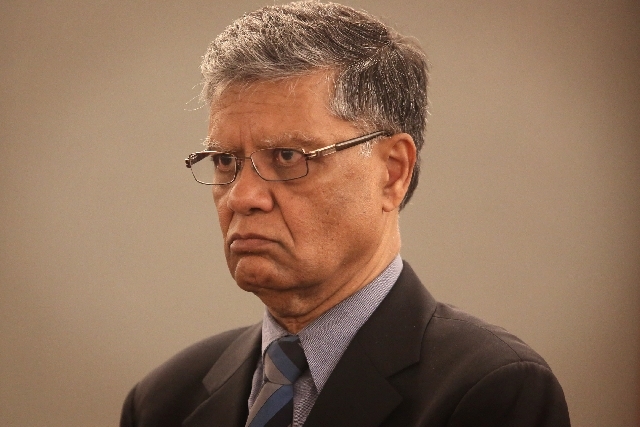Technician testifies Desai removed scope like ‘cracking a whip’
Marion VanDruff, a gastrointestinal technician, described the manner in which Dr. Dipak Desai withdrew a scope during colonoscopy procedures as so fast it was like “cracking a whip.”
VanDruff said if the exam was messy, fecal matter would sometimes splatter on Desai’s gown, the gurney and even the walls.
The head physician and endoscopy clinic owner was noticeably quicker than fellow physicians and grew impatient when the technicians staffing the procedure room were not prepared to receive the scope upon completion of the exam, he explained.
While most doctors waited for technicians to turn off the equipment, Desai quickly disposed of the scope.
“It was almost like being able to catch something that was being thrown at me,” VanDruff testified.
Margaret Stanish, a defense attorney representing Desai, questioned VanDruff’s account of Desai’s behavior, suggesting that the scope was connected to so many pieces of equipment, it wouldn’t have been possible to crack the scope like a whip.
During cross-examination, VanDruff told Stanish that despite his speed, he observed Desai examine and remove polyps, take biopsies and watch the camera’s monitor during colonoscopies.
Desai, 63, and co-defendant, nurse anesthetist Ronald Lakeman, 65, face more than two dozen charges — including second-degree murder, criminal neglect of patients, theft and insurance fraud – in relation to a 2007 hepatitis C outbreak.
Prosecutors claim that Desai sought to maximize profit margins by overloading the endoscopy clinic and performing as many procedures as possible with little consideration for patients’ safety.
That greed combined with his stinginess ultimately led to the outbreak of the deadly virus, according to the state.
The Center for Disease Control and Prevention visited the clinics in late 2007 and its investigation led investigators to believe the virus was spread through the misuse of the anesthetic propofol. Propofol is considered a “single-use” medication, meaning the same vial can only be used on one patient.
VanDruff said he saw the nurse anesthetists carrying “tackle boxes” from room to room. He said he assumed the boxes contained propofol because he had observed the nurses placing the drug and syringes in the boxes in the morning.
Defense attorney Frederick Santacroce, who represents Lakeman, said the nurses placed the anesthesia in the procedure rooms at the beginning of the day so there was no reason for the nurse anesthetists to carry it around.
Although VanDruff said he was able to adjust to the pace at the clinic, he testified that he believed there were too many patients brought through the facility, which staffed one physician in the early morning and two the remainder of the day.
During his tenure at the clinic — from mid-2007 until early 2008 when the clinics were shut down — it wasn’t unusual for upwards of 70 colonoscopy and upper endoscopy procedures to be performed during the day.
One of VanDruff’s responsibilities was to clean and sterilize the scopes. He estimated the clinic had 11 colonoscopy scopes and nine upper endoscopy scopes. The equipment took about 45 minutes to cleanse properly.
Ten scopes would be soaked in the same basin of solution before it was changed. The solution would start out translucent, but over time turned opaque.
“It would become a dirty and a disgusting green,” VanDruff said.
After the CDC’s visit in 2007, the solution was changed after one or two scopes had soaked, he said.

















